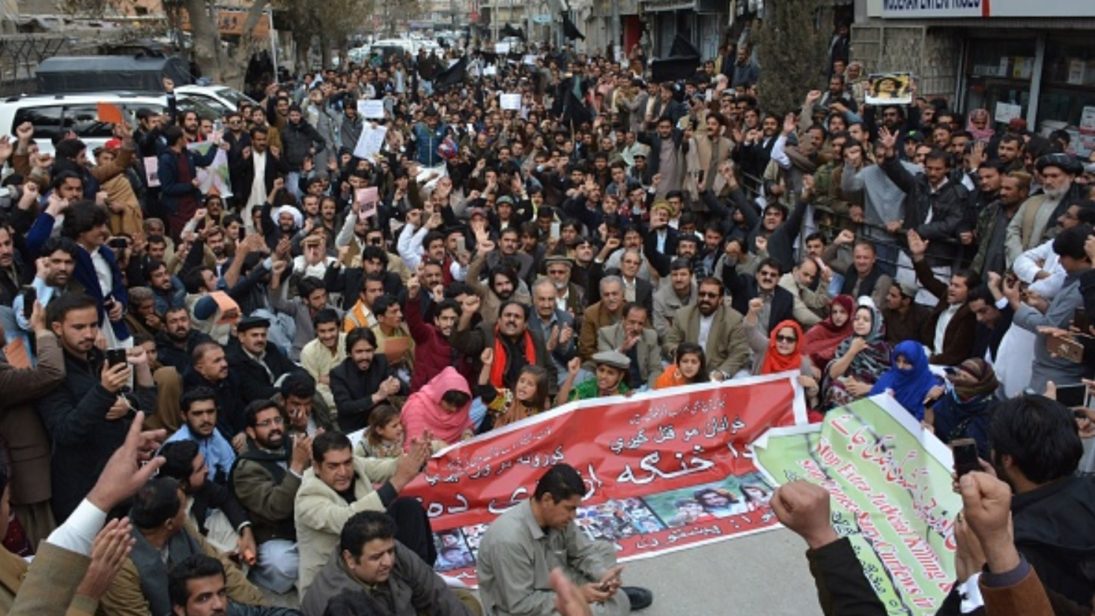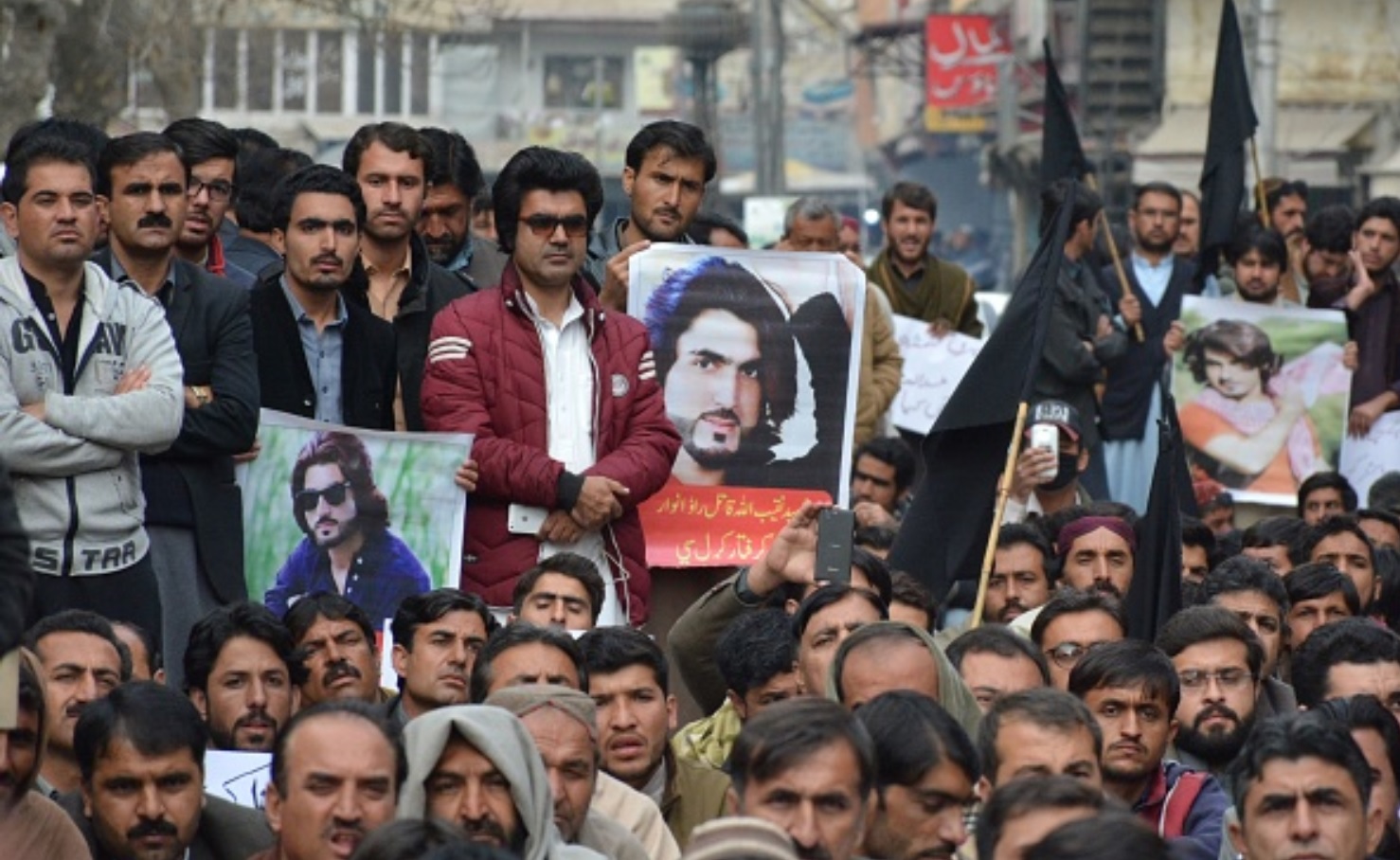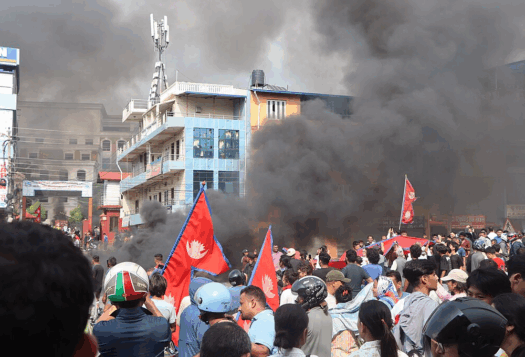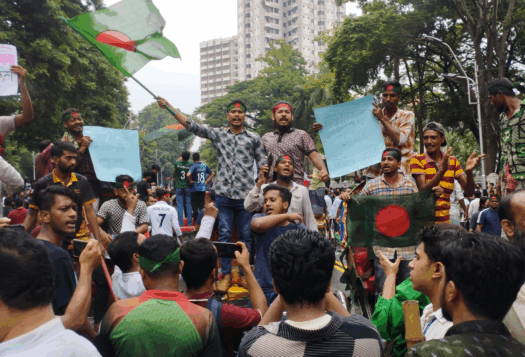
There is a storm brewing in Pakistan: after decades of exclusion and discrimination, the Pashtun community from the country’s tribal areas has come forward to protest the injustice perpetrated against it by the state. Since the creation of Pakistan in 1947, Pashtuns–who predominantly populate the Federally Administered Tribal Areas, close to the Afghanistan-Pakistan border–have been treated unfairly. Due to a British era law called the Frontier Crimes Regulation (FCR), the parliament or courts have no jurisdiction over FATA and the region has been kept socio-economically isolated from the rest of the country, suffering from unemployment and neglect. This ill-treatment was further aggravated by the United States’ War on Terror when Pashtuns found themselves caught in the crossfire of the U.S. and Pakistani battle against the al-Qaeda and the Taliban, bearing the brunt of military operations in the region and suffering racial profiling based on where they lived. Recently, in a rare expression of outrage, the Pashtun community staged a series of protests across Pakistan demanding a stop to these atrocities.
These protests were a spontaneous reaction to the death of 27-year-old aspiring model Naqeebullah Mehsud, who was abducted in January from right outside the store he owned in Karachi. Ten days later, the police announced that he was one of four Islamic State and Tehreek-e-Taliban Pakistan militants who were killed during an “encounter” in a shootout in the city. However, a police inquiry into Mehsud’s killing ordered by the Supreme Court found no evidence that he had any link with terrorist groups and his fake counter sparked a national outrage. In February, friends and young activists from Mehsud’s hometown of South Waziristan launched a campaign called “Justice for Naqeeb,” and used grassroots activism and social media to bring together thousands of Pashtuns from across Pakistan to march towards Islamabad. They staged a 10-day sit-in outside the Press Club in Islamabad, in what has come to be known as the Pashtun Long March.
The protesters came equipped with a four-point agenda: the setup of a commission to inquire into Mehsud’s and other extra judicial killings around the country; an end to the arbitrary assault and harassment of their people; the return of “missing” individuals; and a removal of unexploded landmines strewn across the tribal belt. Following this sit-in, a number of other rallies and protests have also taken place in other parts of the country. In February, protesters gathered in Bajaur, after a student was allegedly killed in another encounter in Karachi and in the Swat district of Khyber Pakhtunkhwa, protesters demanded the removal of unnecessary check posts, where they are unfairly questioned and harassed by security officials.
The scapegoating of Pashtuns is not new in Pakistan. Pashtun-majority areas such as FATA have long been thought to be associated with terrorism, insurgency, and unruly tribes. With the United States invasion of Afghanistan in September 2001, groups such as al-Qaeda and the Taliban fled across the porous border and into the tribal regions of Pakistan and since then, FATA has been targeted by United States drone strikes and Pakistani military operations. The Pashtun community has questioned why they have been solely targeted, when there are terror groups and known hideouts also present in other parts of the country such as Punjab.

Pashtuns have been politically active before, speaking out against the FCR and demanding equal status as the rest of the provinces in Pakistan. Some groups have gone even further, demanding self-determination and the creation of ‘Pashtunistan’ as a separate country. However, these current protests are unique and momentous because they are being led by moderate Pashtun voices. Among those at the sit-in were parents of missing children and wives of murdered husbands, who shared stories of their negative experiences with the Pakistan military, while young Pashtun refugees spoke about the discrimination and racial profiling they have faced and their feelings of being treated as second-class citizens in their own country. These stories captured national attention and gave credence to the idea that Pashtuns have been wronged by the state. This peaceful movement mobilizing thousands based solely on Pashtun identity to get their stories heard and their demands met through a legitimate political process is in stark contrast to a much smaller number of Pashtuns in the Taliban perpetrating violence. By coming together in this way, therefore, the Pashtun community has demonstrated a rejection of all forms of terrorism. Disregarding tribal divisions, Pashtuns have recognized the need to unite in order to raise their voices against state discrimination, which may have an impact on Pakistan’s politics and its security policies in the future.
Not just from prominent Pakistanis such as Pakistan Peoples Party head Bilawal Bhutto Zardari and Vice President of the Awami National Party Bushra Gohar, the Pashtuns have also received support from across the border, with Afghan President Ashraf Ghani calling the Long March a “wake-up call against fundamentalism.” This support is not surprising, given that Kabul has used Pashtun diplomacy in the past as an instrument to improve bilateral relations between Afghanistan and Pakistan. However, the current tension in their relationship also means that Pakistan may see this as Afghanistan supporting elements that are disturbing the functioning of the state, and it may further negatively impact bilateral ties.
For the Pakistani state, the Pashtun protests raise the question of how to balance between national security and human rights. Such a discussion has, unfortunately, been ignored by the state previously but the Pashtun movement is now forcing the government and the military to face this question. As for the Pashtun community, this may be the dawn of a new form of nationalism. The movement’s self-chosen name is telling; the Pashtuns are aware that this is only the beginning and they have a long way to go.
***
Image 1: Banaras Khan via Getty Images
Image 2: Banaras Khan via Getty Images


